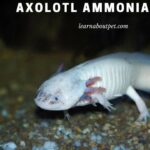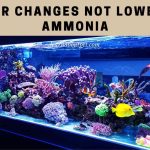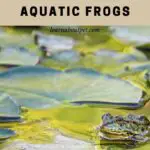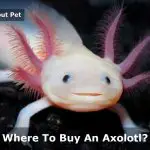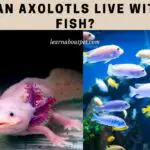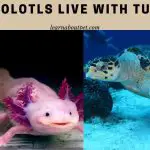Owning a happy axolotl in a tank like its natural habitat is the dream of all aquatic pet owners. One idea to give the tank a natural atmosphere is to put plants inside the tank. Not all types of plants can be an option because putting inappropriate plants can be risky and cause spikes in ammonia levels. Anubias is an excellent choice for an axolotl’s tank.
Are Anubias safe for axolotls? Anubias is one of the exceptionally dependable water plants because it can be in any tank condition. The Anubias will not grow faster or slower than the most appropriate environment for your axolotl.
This plant is often called Anubias axolotl because it is one of the most popular plants among axolotl’s owners. It’s also suitable for beginners who want to put a water plant in their tank.
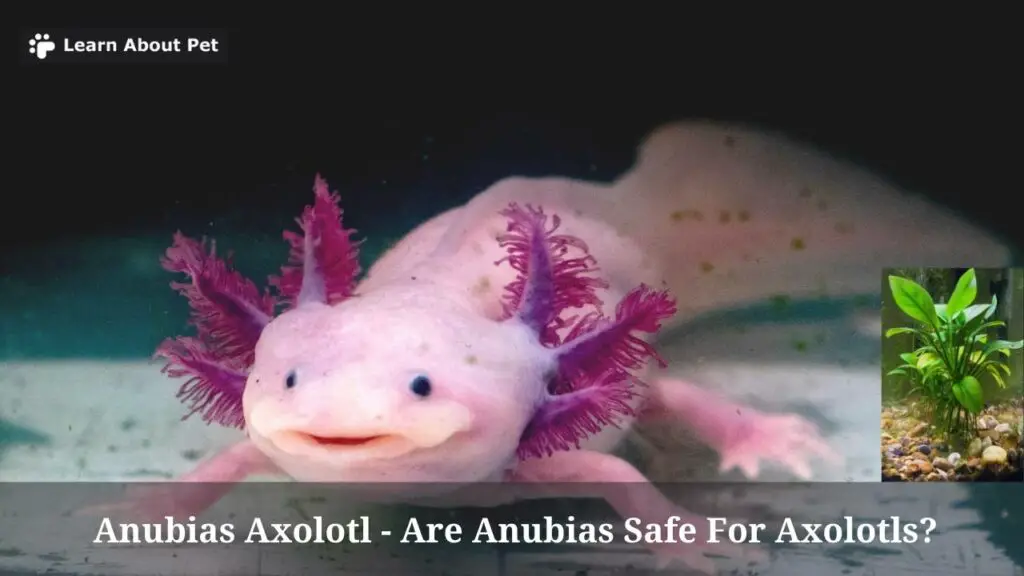
We need to know how the Anubias fits in the axolotl’s tank and how the plant can perform well. Let’s read this article to the end.
Can Axolotls Live In Planted Tanks?
The aquarium plants must adapt to the pet type that will be included in the tank. When it comes to axolotls, you have to think about how aquarium plants will bring a positive impact on plants because there are types of plants that decompose and can increase ammonia levels.
If the ammonia level is high enough, axolotls can be exposed to ammonia poisoning and endanger their health.
The axolotl cannot tolerate dirty tanks because decaying plants can stress the axolotl, refuse to eat, and toxic elements can burn the axolotl’s skin and cause fatal conditions.
But not all plants are bad for axolotls. There are some suitable plants, such as Anubias axolotl, Java Fern, Java Moss, water lettuce, etc.
Ensure you choose the appropriate plants that can provide multiple benefits to the axolotl and other fish in the same tank.
What Live Plants Can Go With Axolotls?
Many aquarium plants can be added to the axolotl tank, such as Java Moss, Java Fern, duckweed, elodea, Anubias Barteri axolotl, etc.
Many types of plants to choose from, ranging from soft, thin, long, and round, which are perfect for hiding places for axolotls.
Axolotls require cold water and should not be exposed to direct sunlight. Choose some plants that are easy to maintain and great in low-light and cold water conditions.
Each plant can add water oxygenation that makes the axolotl more comfortable with the clean air in the tank.
Although Java Fern and Java Moss are the two favorite plants for the axolotl’s tank, we will discuss Anubias as a dependable plant and provide many benefits in the axolotl’s tank. Let’s see why Anubias is an excellent plant on the tank.
Anubias Characteristics
First of all, Anubias is safe for axolotl. Anubias is great because it is a very hardy plant, suitable for beginners, easy maintenance, and one of the most popular plants for aquariums.
The table below is Anubias’ characteristics.
| Parameters | Values |
| Family | Araceae |
| Care level | Easy |
| Growth rate | Slow |
| Light requirement | Low-moderate |
| Hardness | 60-160 ppm |
| pH | 6.5-7.8 |
| Temperature | 72-82°F |
| Maximum size | More than 11 inches |
| Minimum aquarium size | 5 gallons |
Two things can be a reference for aquatic pet owners to choose Anubias, which are easy to care for and have low-moderate light requirements. These two things are suitable for beginners who want to have suitable aquarium plants for their axolotls.
Anubias Sizes And Varieties
Anubias have several varieties. Each variety has its uniqueness, especially in terms of size. When you have an axolotl, you want to adjust the size of your axolotl to the plant aquarium.
You don’t want to put too many plants in it for fear that it is easier to contaminate the axolotl’s tank.
If you have a 10 gallons tank, you can put Anubias under 5 inches like Anubias Barteri var Nana axolotl. For under 10 gallons tanks, you can choose petite Anubias, with sizes under 2.5 inches.
The bigger Axolotls need bigger tanks. Axolotls will pass their time by swimming around the tank. If the aquarium space is too small, they will get bored.
If you use a 20-gallon tank or more, you can choose the Anubias Afzelii and Anubias Barteri with sizes up to 12 inches.
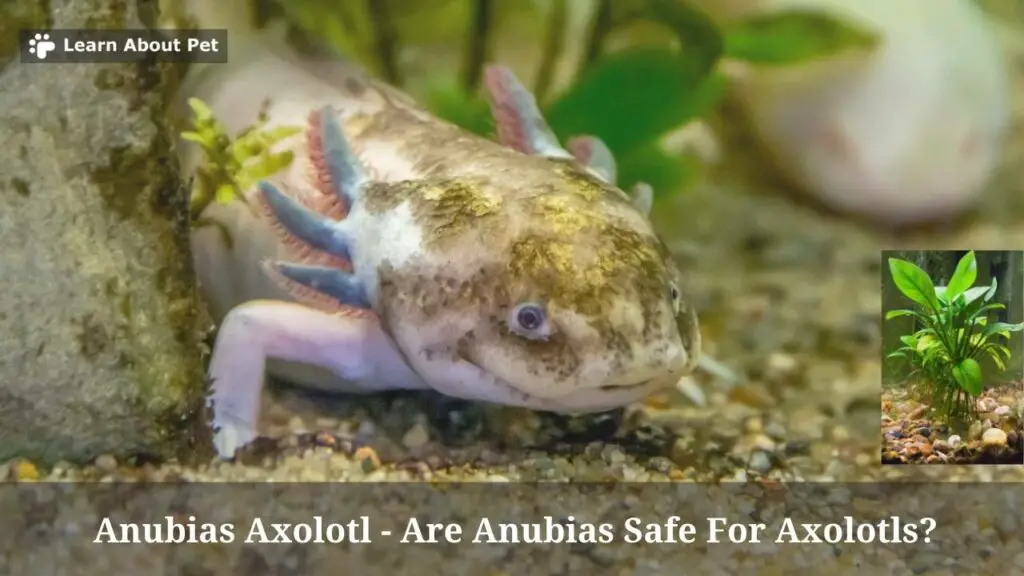
Are Anubias Bad For Axolotl?
There’s no reason Anubias is bad for axolotl. Anubias is good for axolotls because it helps in water oxygenation, are hardy plants and easy to care for, does not cause an ammonia spike, and is capable of growing in any substrates.
There is a possibility that Anubias can become bad for axolotls if you force Anubias Barteri or Anubias Afzelii in an axolotl tank that is less than 10 gallons.
Axolotls will get stressed in a tight place, without enough space for swimming around.
Are Anubias Safe For Axolotls?
Anubias fits well in the axolotl’s tank because it doesn’t need constant sunlight. The plant’s growth rate is slow. It won’t fill the tank any time soon. Anubias Hastifolia axolotl is a good choice if you are first putting Anubias in an aquarium.
Anubias is a flowering aquarium plant that is not difficult to care for and is compatible with the axolotl’s environment.
The water hardness, pH, and temperature can adjust to the axolotl’s needs, so this plant is good for the axolotl’s tank.
Why Anubias Is The Best Plant For Axolotl?
The Anubias Nana axolotl or other varieties can withstand low lighting and cold temperatures. If you don’t want to put any substrate in the axolotl’s tank, Anubias can still live by attaching it to rock or driftwood. Rock or driftwood will prevent axolotls from uprooting the Anubias.
Substrates are dangerous for axolotls, as they can munch everything that moves. It is safer if you don’t put any substrate in the axolotl’s tank to reduce the risk of a choking hazard.
Are Anubias safe for axolotls? Yes, as long as you choose the proper variety with the size of the axolotl tank. Anubias is suitable to be in axolotl’s environment and has a slow growth rate so it is not easy to decompose.
Best Place To Keep Anubias In An Axolotl Tank
The axolotl Anubias is a short plant and is suitable for placing in the foreground of the axolotl’s tank. You can place it with other aquarium plants, but ensure you have enough rock or driftwood so the axolotl can’t mess with it.
If you don’t want Anubias that are too high in the tank, you can choose petite Anubias or Anubias Barteri var Nana. These plants do not grow more than 5 inches and will look great in a tank.
What Safe Live Plants To Keep With Axolotls Beside Anubias?
The great choice besides Anubias axolotl is Java Fern. It’s a perfect spot for axolotl hiding without causing any injury. Java Fern is thin and soft, has low-light requirements, and is the choice of beginner aquarists.
Choose plants that can live in low to moderate temperatures, with leaves that do not cause an ammonia spike in the axolotl’s tank. The usual Java Fern can grow up to 14 inches. If you want a shorter one, choose a Java Fern trident or Java Fern petite which can grow between 3-10 inches.
Final Verdict – Anubias Axolotl – Are Anubias Safe For Axolotls
Selecting aquarium plants for the axolotl must meet several criteria and be suitable for the axolotl’s environment. Axolotl must be at cold temperature, water hardness between 125-250 ppm, and pH 7.4-7.6, while Anubias can fit into some of these criteria.
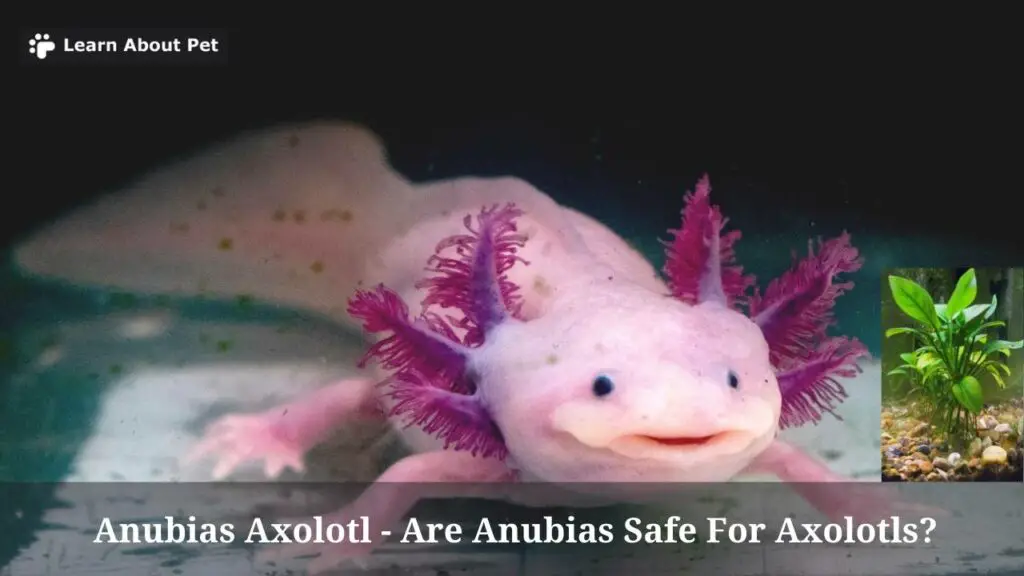
There are several choices of Anubias to choose from, such as Anubias Hastifolia, Anubias Nana, Anubias Barteri, Anubias petite, etc. You don’t need to put any substrates because Anubias can grow between rocks or driftwood.
As a pet lover, make sure to learn about pet more and give your pet axolotl a good and comfortable life!

Welcome to Learn About Pet. My name is Rajkumar Ravichandran and I love all pets, travel, and amazing food. I write about my passion and personal experience caring for multiple pets in this blog! ❤️
Post Disclaimer
DISCLAIMER: THIS BLOG OR WEBSITE, "Learn About Pet", DOES NOT PROVIDE YOU WITH MEDICAL ADVICE AND IS NOT A SUBSTITUTE FOR MEDICAL ADVICE. ALWAYS GET IN TOUCH WITH YOUR PERSONAL VETERINARIAN AND USE INFORMATION HERE AS GENERAL ADVICE.
The information, including but not limited to, text, graphics, images and other material contained on this website are for informational purposes only. No material on this site is intended to be a substitute for professional veterinary advice, food recommendation, diagnosis, or treatment. Always seek the advice of your veterinarian or other qualified health care provider with any questions you may have regarding a medical condition or for pet food related questions.
